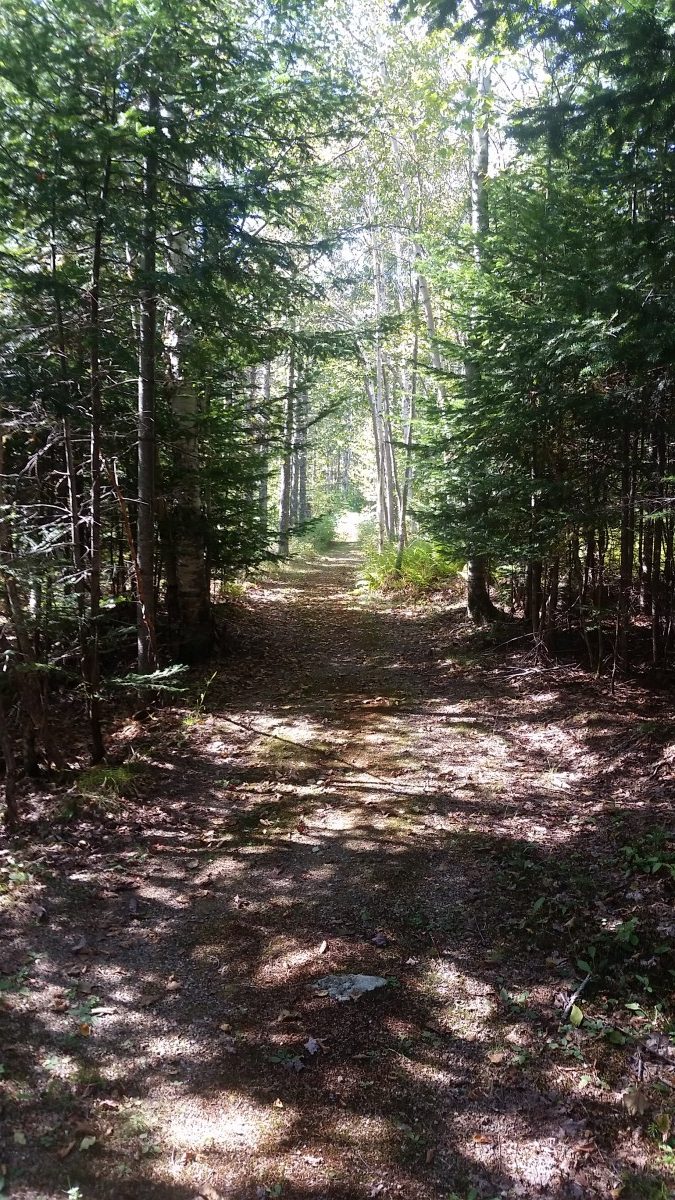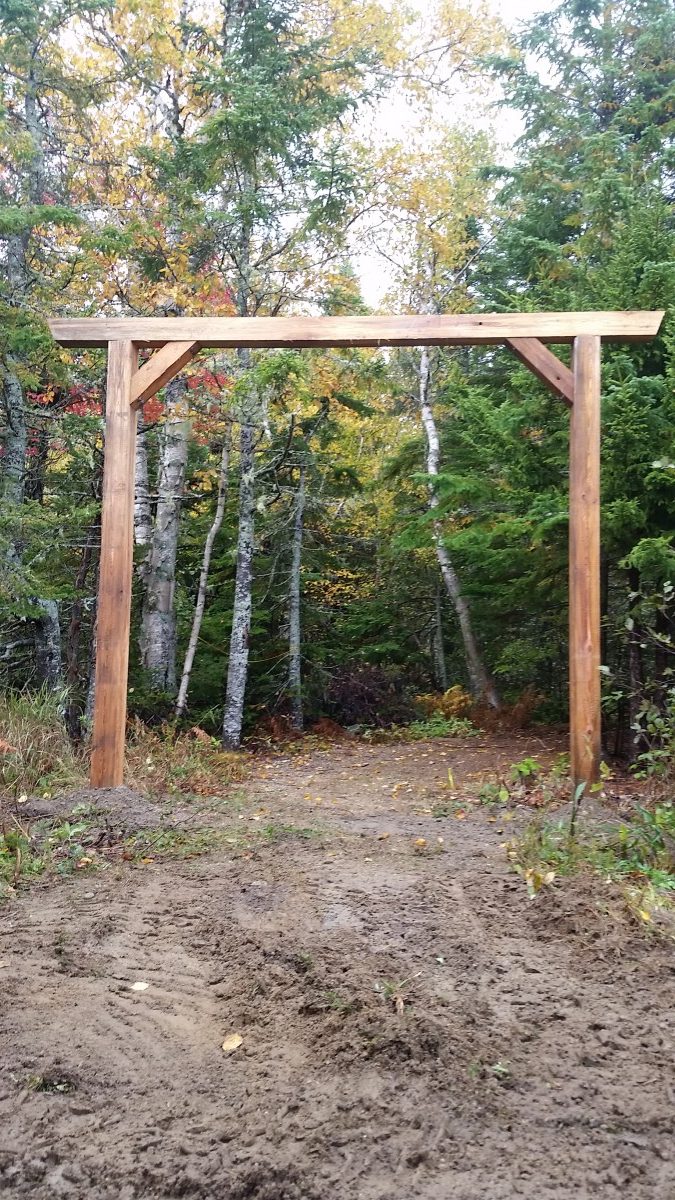Beginning in June 2007, Fort Folly First Nation began the development of a trail system to enhance the benefit of community members health, to beautify the community and to highlight local plants to promote Aboriginal Traditional Knowledge and culture. Initially the trail was 1.9km and has now been extended to 3.5kms, reaching the far corners of the reservation. This in turn created employment for Aboriginal youth under the Fort Folly Habitat Recovery Program. The Bear and Eagle sections of the trail are now complete with the original developed section (Bear) having interpretive panels highlighting medicinal plants that were used in traditional ways and their uses in English, French and Mi’kmaw. The Mi’kmaw interpretations and spelling were done in collaboration with long time friend of the Fort Folly Community, Elder Gilbert Sewell from Pabineau First Nation.
In July 2016, Elder Gilbert Sewell, FFHR staff Laura Buck,Wendy Epworth & Taylor Colford, and Mount Allison University student Sarah Murphy, began the process of collaborating on interpretative panels for the new ‘Beaver’ section of the walking trail. Like the ‘Bear’ trail, also known as the ‘Medicine trail’, the ‘Beaver’ section will be known as the ‘Cultural Experiences’ trail and will explore Fort Folly’s cultural ties/experiences with the land and the relationship the community has had with the environment over many generations. This final piece of the trail is 1.62kms in length, making the entire trail on the Fort Folly Reserve over 3.5kms of beautiful walking trail.
Funding was secured in April 2017 to proceed with the development and installation of interpretative panels on the Beaver section, which will consist of 8 panels describing everything from how Band Members constructed transportation vessels, to crafts such as basketry, to the construction of various types of housing. Robert Lyons from Sackville, NB is the graphics designer on this project in collaboration with Gerald Gloade from Pictou First Nation. Trail heads are going to be installed, road crossing paint, and hopefully a designated parking area for easier access (for now feel free to park wherever you like at our building). The panels have been designed and printed with installation to be completed in late Fall 2017. Trail heads were also completed with the Medicine trailhead starting to the left of the FFHR building; and the Cultural Experiences trailhead starting in the top corner of the parking lot by the chain link fence. Designated parking is on the agenda for Spring 2018 but for now please feel free to park anywhere in the FFHR parking lot.
A huge thank you to recent MTA Grad Sarah Murphy for spearheading the panels for the last section of the trail. Sarah made this project an opportunity for her to base her thesis on and she did an amazing job helping to secure funding, working with Gilbert to get material for the panels, doing the interpretative writing, getting Robert as the graphics designer etc., etc…there is just so much effort she did I can’t even describe it all, but without her the trail wouldn’t be where it’s at today so thank you again for all your hard work Sarah!
(There are 3 sections that make up the trail: Eagle, Bear, and Beaver, with Eagle being the only section not developed with panels or being developed with panels in the near future).
To see the interpretative panels for the Medicine trail please click here:
*The Cultural Experiences interpretative panels will be available in Spring 2018
Below are pictures of the Medicine and Cultural Experiences trails.
















